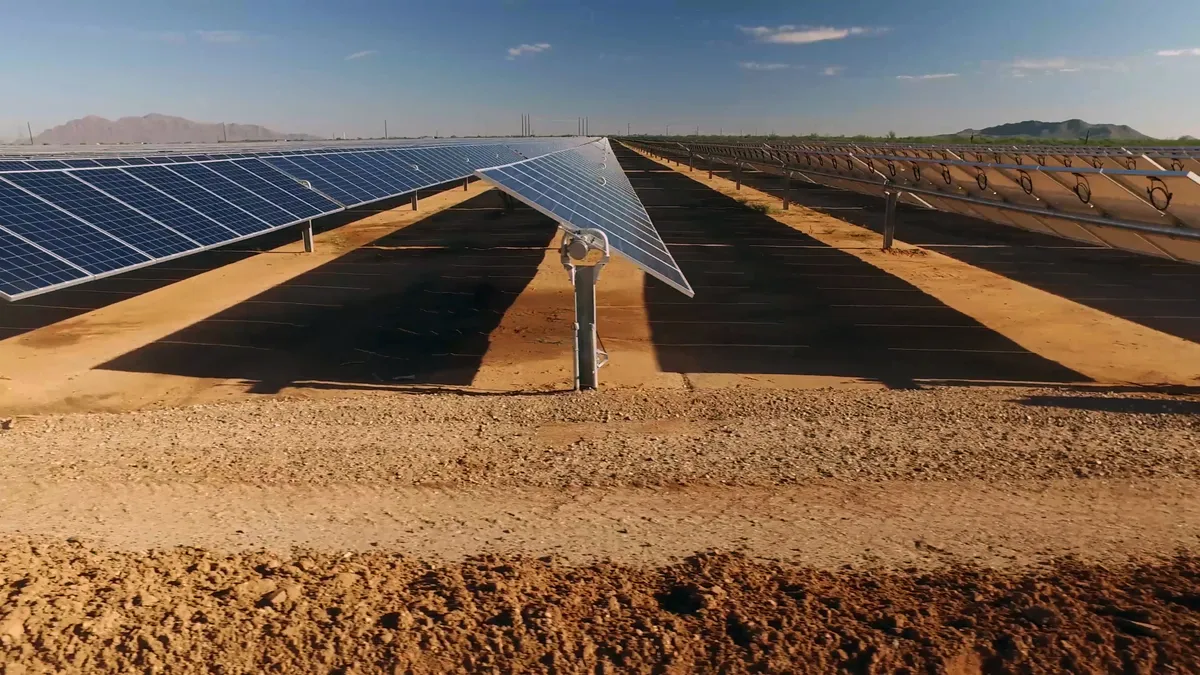Dive Brief:
-
Corporate procurement led to the installation of a record 11.06 GW of clean energy in 2021, and is already on pace to exceed this record in 2022, with 6.45 GW announced as of late April, according to a State of the Market report released by the Clean Energy Buyers Association on Tuesday.
-
Since 2014, corporate procurement has represented 37% of the carbon-free energy added to the U.S. grid, according to CEBA.
-
Despite challenges created by long interconnection queues, supply chain constraints and, most recently, the U.S. Department of Commerce investigation into solar imports from Southeast Asia, CEBA CEO Miranda Ballentine said corporate demand for renewable energy continues to grow.
Dive Insight:
Corporate clean energy procurement continues to outperform the expectations set mere years ago by independent energy buyers, according to the 2022 CEBA State of the Market report.
More than 50 independent energy customers in the U.S. secured 11 GW of clean energy in 2021, a 32% increase over the previous record set in 2020, according to the report. While large U.S. corporations including Amazon, Meta and Verizon continued to represent the largest buyers of clean energy, small and mid-sized companies also entered the market in a big way last year, Ballentine said during a State of the Market presentation on Tuesday.
Slightly more than half of the companies that purchased clean energy projects in 2021 were first-time energy buyers, Ballentine said. Six of the 17 companies to announce purchases so far this year are also first-time buyers, according to the State of the Market report.
CEBA has observed an increase in collaboration among independent energy buyers, Ballentine said. Last year saw four deals in which a total of 13 customers combined their buying power in order to secure a power purchase agreement. In some cases, as in a deal led by food manufacturer Mars, the aggregation deal represented efforts to decarbonize the company’s broader supply chain, Ballentine said.
Companies are also beginning to cooperate more with utilities, Ballentine said. Although 75% of the deals announced in 2021 took place in organized wholesale energy markets, last year saw the highest percentage of projects located outside those markets since 2018, she said.
Increased pressure on companies to reduce their carbon footprint means that demand for clean energy will likely continue to grow, Ballentine said.
“So we’re super optimistic, but we know with any maturing market, you’re going to see some challenges,” she said.
For buyers of renewable energy, current challenges include a growing mismatch between the supply of and demand for clean energy. According to the CEBA report, energy customers face long delays from backlogged interconnection queues, particularly in the PJM Interconnection and Midcontinent Independent System Operator markets, which represent 22% and 13% of energy deals to date.
Recent uncertainty triggered by the solar imports investigation is also impacting buyers, according to CEBA, because solar is the predominant choice of generation technology for independent power deals, representing 77% of large deals announced in 2021.













